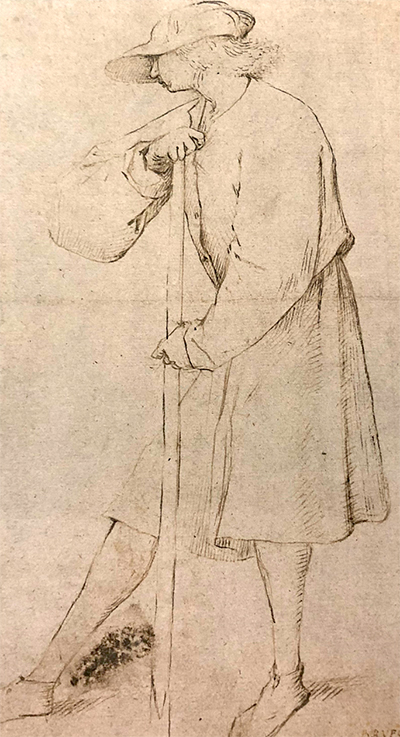This is one of the few Pieter Bruegel figurative drawings to have survived to the present day, with most no doubt succumbing to the fragile nature of this medium. The theme of rural work is entirely consistent with how most people remember this artist's career.
We see here an anonymous figure looking away from us whilst holding an agricultural tool. Their clothing is consistent with working in the fields and we already are well aware of Bruegel's interest in this type of work. Historians can learn considerable amounts from this accurate piece, even though the artist does not go into as much detail as he might have done. It is likely that this drawing was a preparation piece for a larger painting, and this genre of figurative art requires considerable practice in order to be mastered effectively. Even respected artists such as Bruegel have to continue to work on their understanding of the human body in order to retain a high level of accuracy. There are also additional challenges from the fashion of the period, with the clothing in this case being fairly hard wearing and functional rather than fashionable.
Bruegel would turn many of his landscape drawings into a printable form which allowed him to then produce extra income but this particular sketch seems more for the purposes of practice and experimentation for a later piece. He is probably most concerned with the posture and angle of the various limbs of this figure, where everything seems realistic and also in tune with the occupation of this individual. Many artists who studied the work of Bruegel would then focus their own careers on the working poor, which most had previously ignored. You will find the likes of Millet and Courbet as amongst the best examples of that, though they appeared several centuries later across in France, which underlined the huge impact left behind by the Bruegel family, whose spearhead was undoubtably Pieter the Elder. Several drawings from Jan the Elder, a relative, have also been uncovered from some years afterwards and these followed similar technical methods that had been passed down.
We have been unable to locate this drawing within any collection unfortunately, and his work in this medium has been dispersed fairly widely across Europe. Some of his landscape pieces have been picked up by private collectors and so it is entirely possible that this portrait has taken a similar journey. The value around the name of this artist means anything confirmed as having come from his hand will instantly be valued in the thousands, even for his simpler drawings such as this.




